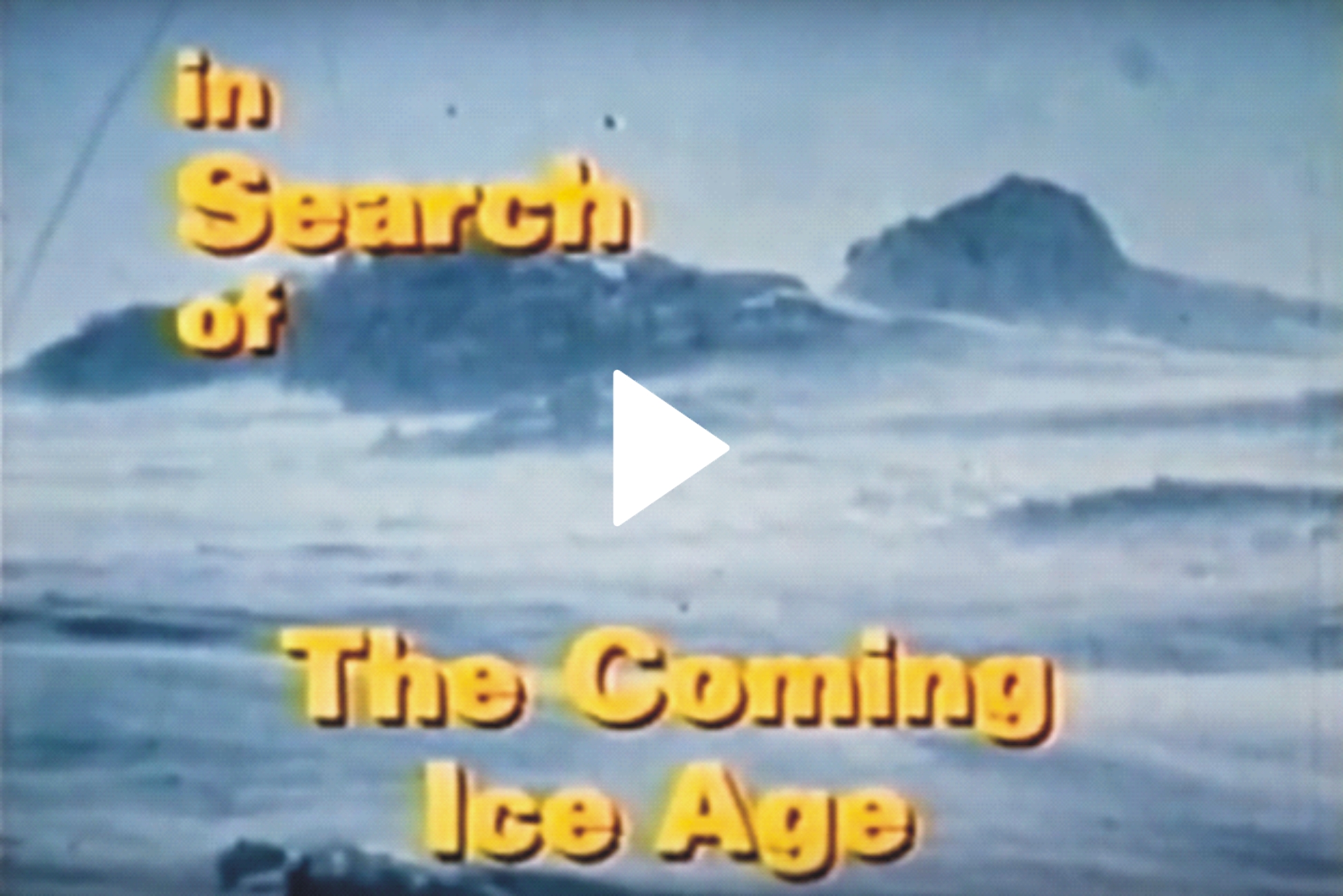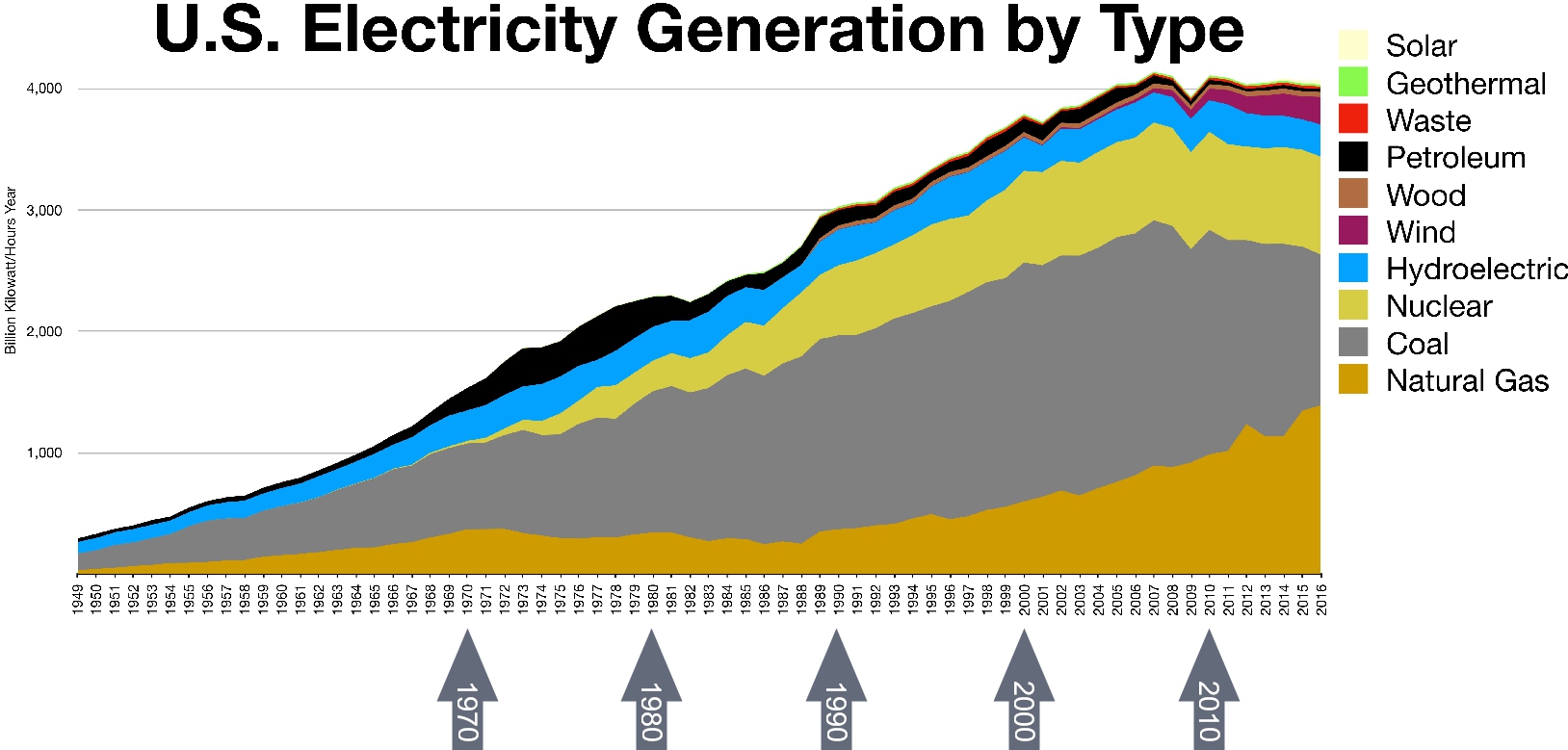
I spent last week at the Association of Energy Services Professionals (AESP) National Conference in New Orleans. Our industry is in transition once again. Substantial changes are on the horizon. Let’s recap some highlights and lowlights in the utility and demand side management industries the past few decades.
- As nuclear power was going to be too cheap to meter in the 1970s, the oil embargo, Jimmy Carter sweater speech, and the Three Mile Island nuclear accident resulted in a radically different direction for our energy future.
- On the heels of the above, and the global cooling threat (check out the video nearby), we began to build coal-fired power plants as fast as possible.
- Efficiency programs were born and advanced slowly in the 1970s and 1980s. Utility load growth was steady.
- Around 1990, barely a decade after the oncoming ice age, “climate experts” decided we were headed for global warming. At the same time, another wave of efficiency took off. The electronic fluorescent lighting ballast was invented, and it flopped. The compact fluorescent light bulb was born too, and it did its own face plant. Eventually, these technologies succeeded.
- As the tech bubble expanded to unsustainable heights in the late 1990s, deregulation was on the doorstep. With free markets about to be thrust upon the monopoly-built utility system, who needed efficiency? Everything would take care of itself, except it didn’t. Enron.
- In the second half of the aughts, with Democrats in congressional power under GHW Bush, we had the biggest push for efficiency ever. It flamed across the Midwest and beyond. Per the chart below showing flat sales since 2009, one could credibly argue the impact was substantial.

Post Lighting Era
Now we find ourselves in the post-lighting era. The lighting world has been transformed to possibly its last iteration – the LED light bulb. The LED light bulb is the laptop computer of PCs; the smartphone of phones. There is a little twist of improvement here and there, but the technology is mature, and we are approaching the late adoption phase.
This brings us back to AESP and looking forward. Like the maturing light bulb, the old-school mass-market efficiency implementers have consolidated and matured, although not necessarily in that order. While some have grown to behemoth size, new companies are emerging every year. Newbies are tech companies looking to become the Alexa or Netflix of Energy Efficiency. Engagement and analytics companies with cloud-based platforms are everywhere, but what or who will succeed?
Control without Thought
I have read or heard in many publications, presentations, and webinars that people want more control over their energy use. They want to interact with it and let it know who’s boss.
Are you sure?
Bundled Cable v Bundled Phone
Consumers and customers are strange. They abhor the bundle of cable channels for one low price of $100 per month, but $100 per month for a pocket computer serving as everything but a telephone is fine. They hate the all-you-can-eat cable subscription, but they love the all-you-can-eat smartphone. How much sense does that make?
I think some people enjoy the thrill of beating the cable company going their own way. Good luck with that. I have better uses for my time.
Bundled Fares v Unbundled Fares
Let’s move on to control and menus. As late as the 1990s, airlines served hot meals on most flights for everyone on the plane – from cattle class to first class. There were virtually no limits on luggage. It all came with the fare you paid, and that fare changed every minute it seemed.
Then, OMG(!), the airlines reduced cost, cut the meals, and charged for extra luggage. Consumers howled like coyotes in the sub-zero winter Wisconsin darkness. Why? Because we were asked to pay for what we use. Isn’t it terrible? We want choice and control? It depends, I guess.
Do you think the ever-growing smorgasbord of breakfast offerings at the likes of Hampton, Fairfield, or Holiday Inn Expresses are free? I’ll bet they average $25 per head. What a deal! What if they made it optional, and charged for it? Cue the coyotes. Now the consumer has to choose between the $3 cellophane-wrapped muffin and an awful cup of coffee from the corner dunkin yack, or the $25, mostly superb breakfast, at the motel. Call me crazy, but I think consumers would prefer the bundle and not knowing what the “free” breakfast costs.
Lowest Possible, Convenient Cost
Coming back to energy: Consumers want energy to power their lives at the lowest possible convenient cost, period. This is the point of this post. I see surveys that ask things like, “If you could buy your electricity from Google or Amazon, would you?” What is the point of that? Why not just ask, “if you could ride a drone to work over the top of the stalled freeway traffic, would you?” C’mon! That is not a relevant question.
The utility business model and compact between customers, regulators, and lawmakers needs to change to optimize customer experience and value. Look forward to much chatter from this wise guy in the coming weeks.





